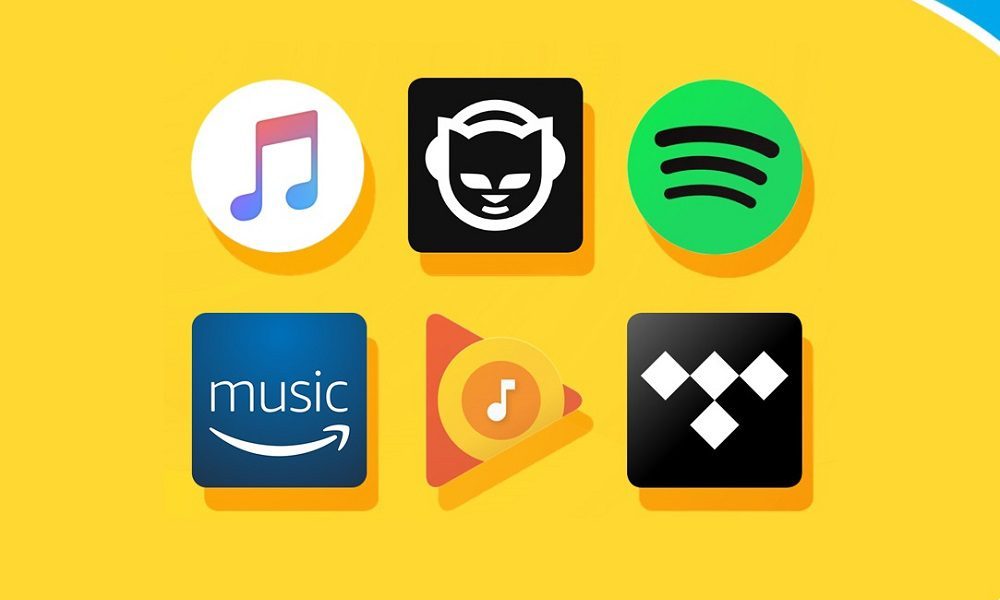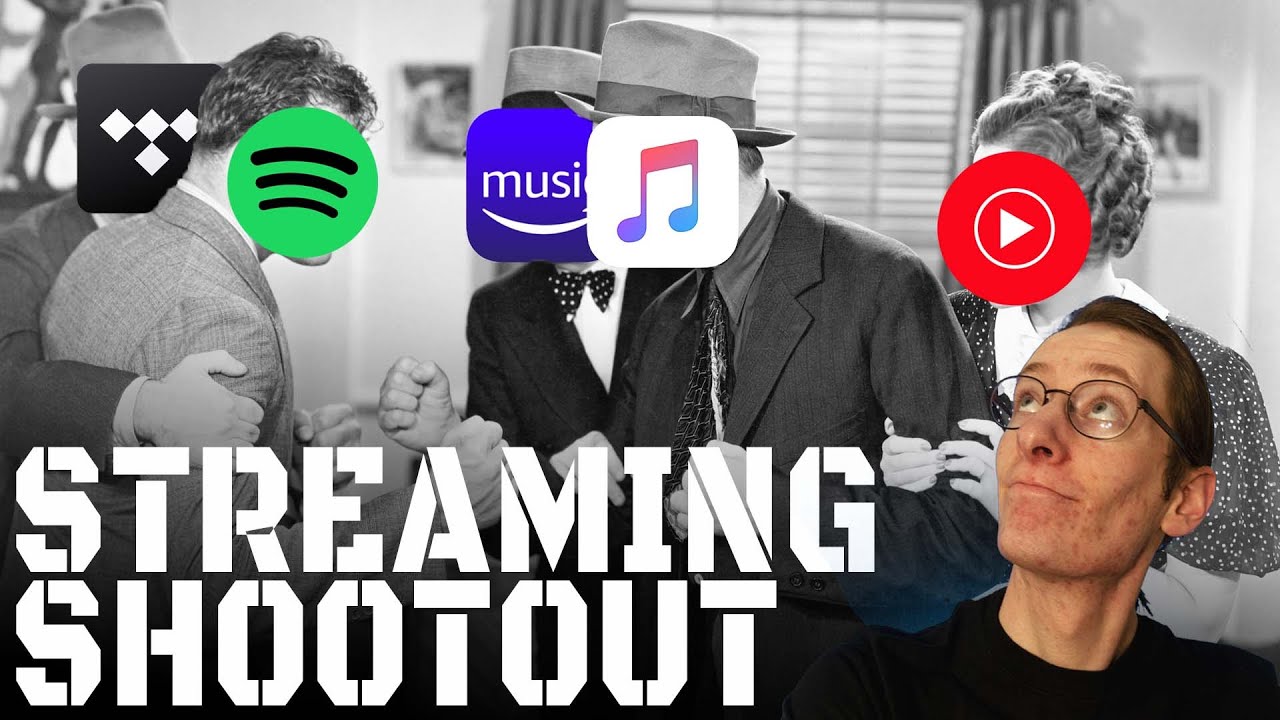In an era where music streaming has become a daily ritual, a popular debate has emerged: Does Spotify or YouTube Music deliver better sound quality? Both platforms have their unique features and appeal, but when it comes down to audio fidelity, which one truly stands out? Let’s dive in and explore what each service has to offer, starting with Spotify.
Overview of Spotify

Spotify has redefined how we listen to music. Launched in 2008, it quickly rose to prominence, boasting millions of tracks and curated playlists. But beyond its extensive library, Spotify is celebrated for its user-friendly interface and personalized features. Here are some key aspects that make Spotify a notable contender:
- Extensive Library: With over 70 million songs, you can find just about any genre or artist. Whether you're into classic rock, pop, or underground indie, Spotify has you covered.
- Personalization: Spotify’s algorithm creates tailored playlists based on your listening habits. Discover Weekly and Release Radar are just two examples that keep your music experience fresh and exciting.
- Audio Quality: Spotify offers different audio settings. Users can listen at a range of qualities, from normal (96 kbps) to very high quality (320 kbps) for Premium users. This flexibility allows you to adjust based on your device and network conditions.
- Cross-Platform Compatibility: Spotify works seamlessly across various devices—smartphones, tablets, laptops, and smart speakers—making it easy to enjoy your favorite tunes anywhere.
- Social Features: The ability to share playlists, see what friends are listening to, and collaborate on playlists adds a fun social element to your music experience.
All these factors contribute to Spotify's popularity, making it a worthy choice for audiophiles and casual listeners alike. But is it the ultimate destination for sound quality? Let’s keep this exploration going and compare it to YouTube Music!
Also Read This: The Top Ten Tech Companies Making Headlines in the USA
Overview of YouTube Music

YouTube Music is a streaming service created by YouTube, designed to cater specifically to music lovers. Launched in 2018, it quickly carved out its niche by integrating the vast library of
One of the standout features of YouTube Music is its seamless transition between music videos and audio tracks. If you're the kind of listener who enjoys watching performances or discovering new artists, this integration is a game changer. With a user-friendly interface, navigation feels intuitive, allowing you to explore various genres, curated playlists, and personalized recommendations based on your listening habits.
Are you worried about missing out on the latest hits? Don’t be! YouTube Music offers a constantly updated catalog of new releases and trending songs, ensuring that your playlist is fresh and current. Plus, its "Library" feature lets you save your favorite songs, albums, and playlists, giving you easy access to your go-to tracks.
Another noteworthy aspect is the *audio quality options available with YouTube Music. The platform supports streaming at different bitrates, catering to both the casual listener and those who prioritize superior sound. Whether you're using it for everyday listening or for more serious audio experiences, YouTube Music provides flexibility.
In summary, YouTube Music stands out as a versatile platform that appeals to varied musical tastes. Whether you prefer audio or video, or both, it has something to keep every music aficionado engaged.
Also Read This: Understanding YouTube TV Streaming Limits
Comparing Audio Quality

When it comes to sound quality, comparing Spotify and YouTube Music can feel like trying to choose between two delicious desserts—each has its own merits! However, the nuances in audio quality can make a significant impact on your listening experience. Let's break it down to help you understand how each service stacks up in this department.
| Feature | Spotify | YouTube Music |
|---|---|---|
| Standard Bitrate | 160 kbps (Free), 320 kbps (Premium) | 128 kbps (Free), 256 kbps (Premium) |
| Lossless Audio | Available through Spotify HiFi (not launched yet) | Not currently available |
| Audio Compression | Standard audio compression | Standard audio compression |
Spotify Premium users enjoy the advantage of streaming at a high-quality bit rate of 320 kbps. This level of quality is particularly appealing to audiophiles who appreciate the subtle nuances in sound clarity and detail. On the flip side, while YouTube Music offers its musical library in decent quality, it lags behind Spotify in terms of the maximum bitrate available. YouTube Music users can stream up to 256 kbps with their premium subscription, which is adequate for casual listeners but may fall short for high-end audio enthusiasts.
Moreover, Spotify is actively working towards launching its Spotify HiFi tier, promising lossless audio streaming, which would elevate its audio quality game even further. In contrast, YouTube Music does not currently have plans for a lossless option, making it a less appealing choice for those primarily focused on audio quality.
In essence, if you're someone who prioritizes sound quality, it seems that Spotify has a clear edge over YouTube Music at this point. Both platforms shine in their own respective ways, but for high-fidelity listening experiences, Spotify may be the better choice for now.
Also Read This: YouTube TV and Firestick Compatibility and Setup Guide
5. Analysis of Loudness Levels
When it comes to sound quality, loudness plays a significant role in how we perceive our music. Both Spotify and YouTube Music have their unique approaches to loudness normalization, which is critical for a consistent listening experience. Loudness normalization helps avoid sudden volume jumps between tracks, ensuring a smoother flow while you're jamming out to your favorite playlist.
In general, Spotify applies a loudness normalization algorithm that aims to balance the volume across different tracks. Here’s an overview of how both platforms handle loudness:
| Platform | Loudness Normalization | Default Volume Level |
|---|---|---|
| Spotify | On by default; offers options to adjust | -14 LUFS (Loudness Units relative to Full Scale) |
| YouTube Music | Automatically adjusts; less user control | -13 to -10 LUFS (varies by content) |
Spotify generally aims for a loudness level around -14 LUFS, while YouTube Music ranges from -13 to -10 LUFS. This means that YouTube Music may hit harder with certain tracks, but at the risk of occasional clipping. However, it’s essential to remember that loudness is often a subjective experience, and a track’s dynamic range and mastering quality can significantly impact how "loud" it sounds.
So, whether you're a fan of crisp, loud beats or prefer a more balanced approach, understanding loudness levels can help you make an informed choice about which service best suits your auditory preferences.
Also Read This: IMDb It Ends: A Deep Dive into the Movie’s Conclusion
6. User Experience and Preferences
In the battle of the streaming giants, user experience is arguably just as important as sound quality. After all, what good is high-fidelity audio if you can't navigate the platform easily? Both Spotify and YouTube Music offer unique features that make each service appealing in different ways. Let’s break down the user experience of both services.
Spotify has built a reputation for its intuitive interface that caters to both casual listeners and audiophiles. Here are some of its standout features:
- Curated Playlists: Spotify excels with its personalized playlists, such as "Discover Weekly" and "Release Radar," which tailor music suggestions based on your listening history.
- Offline Listening: Users can download songs and playlists for offline listening, perfect for on-the-go situations where data may be limited.
- Social Features: Spotify allows users to follow friends, see what they are listening to, and even collaborate on playlists.
YouTube Music, on the other hand, pulls in the power of its immense video catalog, bridging the gap between audio and visual experiences:
- Music Videos: Unlike Spotify, YouTube Music provides access to thousands of official music videos, enriching the listening experience.
- Live Performances: You can discover live concert videos, covers, and remixes that you won't find elsewhere.
- Smart Recommendations: YouTube Music utilizes Google's algorithms to recommend music based on your viewing habits, making it easier to discover new tracks.
Ultimately, user preference boils down to what features resonate more with you. If you're seeking a music-centric experience focused on playlists and social features, Spotify could be your go-to. Alternatively, if you love the idea of combining audio with visuals, YouTube Music might be a better fit. Either way, both platforms strive to provide their users with an enjoyable listening experience.
Which Streaming Service Delivers Better Sound Quality: Spotify or YouTube Music
Streaming music has become a primary way for people to enjoy their favorite tunes, but not all services deliver the same audio quality. Among the top contenders, Spotify and YouTube Music stand out. In this article, we'll compare their sound quality and other related features to help you make an informed choice.
Both platforms offer a range of audio settings and formats:
| Feature | Spotify | YouTube Music |
|---|---|---|
| Bitrate |
|
|
| Audio Format | Ogg Vorbis | AAC |
| Audio Quality Settings | Yes (includes High quality) | Yes (includes High quality) |
In terms of sound quality, Spotify Premium* offers a slight edge with its max bitrate of 320 kbps, compared to YouTube Music's 256 kbps for premium users. Additionally, Spotify's use of Ogg Vorbis codec can yield better audio performance on various devices. While YouTube Music may excel in video content and music videos, its sound quality is slightly inferior.
Overall, both platforms have their strengths, but if sound quality is your primary concern, Spotify stands out as the better option.
Conclusion: After analyzing the audio characteristics and features of Spotify and YouTube Music, it is clear that Spotify provides superior sound quality, making it the preferable choice for audiophiles and casual listeners who prioritize the listening experience.
 admin
admin








